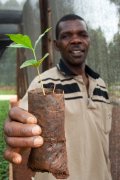The History and Development Story of Salvadoran Coffee beans and the Flavor and Taste characteristics of Salvadoran Mocha beans
National El Salvador Covado
Apaneca-Ilamatepec volcanic area
I hope Finca La Esperanza wants me to.
Master Pacas Pacas family
1700 masl above sea level
Variety of Micro Mocca mocha beans
Natural Daily
The palate is thick and rich, with cardamom, wine and milk chocolate fragrance, which is more elegant than the previous year.
Coffee cultivation introduced to El Salvador
On January 1, 1796, some historians introduced coffee cultivation to El Salvador between 1779 and 1796. according to historical records, the first plants were found on the land of two farmers from Ahuachap á n who obtained seeds in Jutiapa Guatemala.
Crop support measures on July 7, 1846
In the middle of the next century, a number of measures were required to support the cultivation of coffee, such as a law that came into force in 1846, which stipulated that all farmers who were committed to growing coffee and owned their own land were above 5000 feet above sea level. the council can be removed from office for ten years.
Treaty signature
On July 7, 1853, another aspect of intensification of the sector was the first commercial treaty signed with the United States in 1853 and the establishment of the International Bank in 1880, in addition to the installation of telegrams for effective communication with El Salvador. The world.
Law and order
During the administration of General Gerardo Barrios on July 7, 1855, the following decree was issued: decree of February 5, 1855, entitled the allocation of land to those devoted to the cultivation of coffee, which states: "the decree of the Legislative Assembly approves the agreement of the Supreme Government to purchase the land necessary for the population and the corresponding ejidos and to use the open space around it for its services".
Crop expansion
From 1857, the cultivation expanded throughout the territory of El Salvador, starting with Avachapan and then passed on to Santa Ana and Sosonat, where it was introduced to the west of San Vicente, the mountains of Berlin and Mount Chaparastick of San Miguel.
Development and modernization
Between the 1930s and 1940s, on December 19, 1930, coffee cultivation received strong support, encouraging the planting of new coffee areas through credit policies in favour of coffee growers.
The modernization of coffee cultivation began in the 1950s, when coffee growers began to replace bourbon varieties with Arabica varieties and better use fertilizers to manage the shade of coffee plantations in different areas. Methods, using a new pruning system, start anti-erosion measures and increase the shrub population to about 2000 coffee trees per block.
The establishment of the Salvadoran Coffee Institute (ISIC) made a significant contribution to improving productivity and creating new varieties of high quality and high yield, and began to blossom and bear fruit in the 1960s.
July 7, 1950
Environmental contribution
On July 7, 1950, the prosperity of coffee cultivation came from the use of shade from pristine moist forests, and as the planting intensified, these trees were replaced by other species, mainly those of the genus Ingaz, because they had sufficient cultivation characteristics. .
Prosperity
On 4 January 1975, as a result of achievements in productivity, El Salvador became the world's fifth largest producer and fourth largest exporter in the mid-1970s, with a harvest of nearly 5 million metric tons.
The current situation
On 7 July 2016, 11 per cent of the country's territory was currently covered by forests and 7 per cent was composed of coffee plantations and cultivated shade and mountain trees. For these reasons, it is important to make people aware of the importance of coffee to the country and its consumption.
Important Notice :
前街咖啡 FrontStreet Coffee has moved to new addredd:
FrontStreet Coffee Address: 315,Donghua East Road,GuangZhou
Tel:020 38364473
- Prev

What is Piccolo latte? What's the difference between Piccolo coffee and latte coffee?
At present, the most popular coffee drinks, in addition to Australian White and dirty, and there is also a kind of coffee called Piccolo, so what is Piccolo Coffee? Today, the editor will come and explore with you. Piccolo coffee is exactly born in Australia. It is said that it is because the local bakers and baristas
- Next

Classification of Ugandan coffee beans in Uganda, the second largest coffee producer in Africa
Uganda is the second largest coffee producer in Africa, the fourth largest Robusta coffee producer and the tenth largest coffee producer in the world. One out of every 10 coffee farms in the world is located in Uganda, where 1.7 million coffee households account for 10 per cent of global farms. Coffee production in Uganda may still be feasible in the coming decades, but future environmental scenarios require us to start now.
Related
- Detailed explanation of Jadeite planting Land in Panamanian Jadeite Manor introduction to the grading system of Jadeite competitive bidding, Red bid, Green bid and Rose Summer
- Story of Coffee planting in Brenka region of Costa Rica Stonehenge Manor anaerobic heavy honey treatment of flavor mouth
- What's on the barrel of Blue Mountain Coffee beans?
- Can American coffee also pull flowers? How to use hot American style to pull out a good-looking pattern?
- Can you make a cold extract with coffee beans? What is the right proportion for cold-extracted coffee formula?
- Indonesian PWN Gold Mandrine Coffee Origin Features Flavor How to Chong? Mandolin coffee is American.
- A brief introduction to the flavor characteristics of Brazilian yellow bourbon coffee beans
- What is the effect of different water quality on the flavor of cold-extracted coffee? What kind of water is best for brewing coffee?
- Why do you think of Rose Summer whenever you mention Panamanian coffee?
- Introduction to the characteristics of authentic blue mountain coffee bean producing areas? What is the CIB Coffee Authority in Jamaica?

